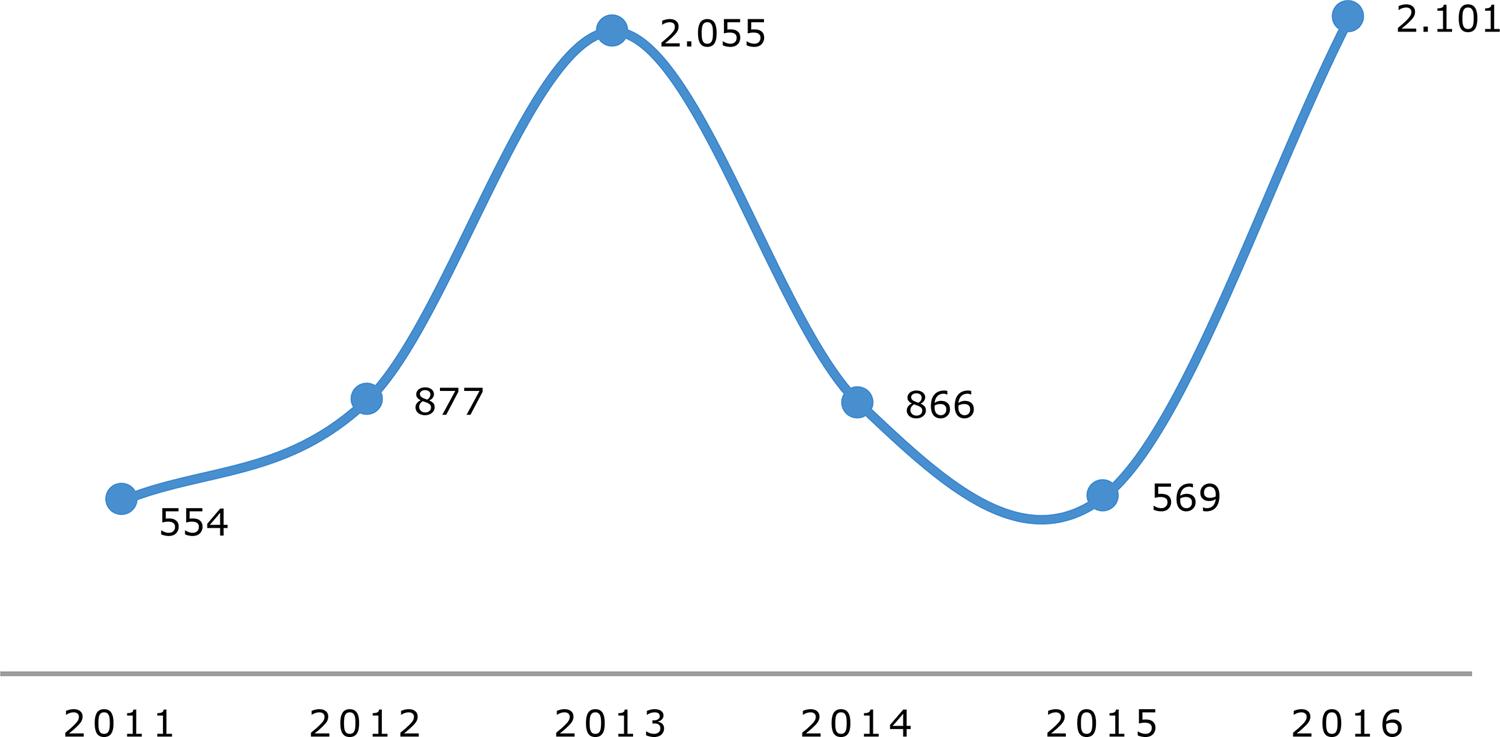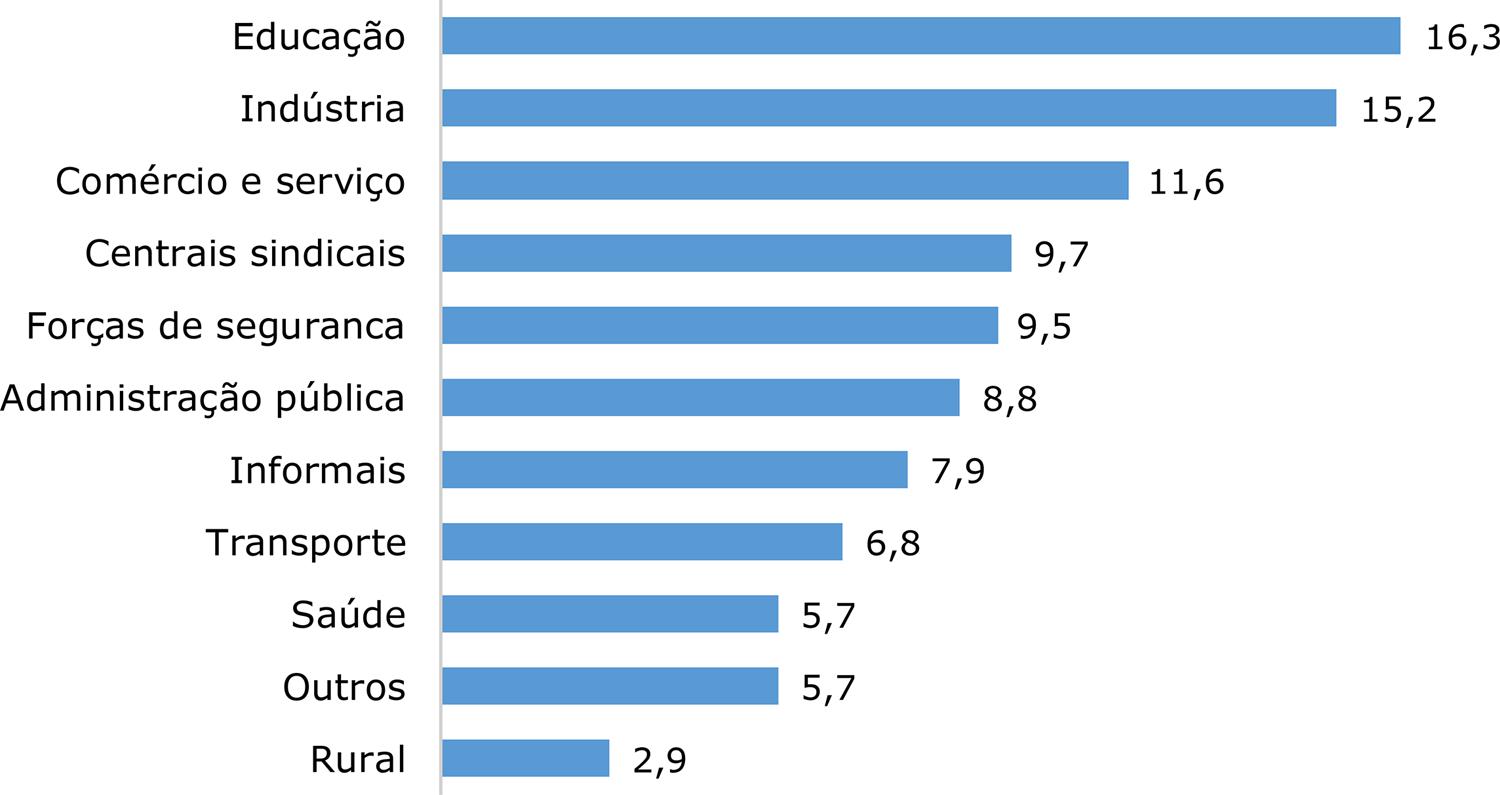Abstract
This article proposes analyzing the characteristics of the protests in Brazil between 2011 and 2016, a socio-economic and political context marked by the contradictions and the decline of the PT’s government. The analysis is based on a protest database drawing from the Folha de São Paulo newspaper. We hold that the protests precede the outbreak of the economic crisis and when the peak in 2013 is reached, they produce changes in the political context, opening unprecedented political opportunities for a heterogeneous set of actors, on both to the right and to the left of the PT, to manifest their differences in relation to the government. The protests show the limits of the PT’s class conciliation politics and constitute the scenario of instability that contributed to Rousseff's impeachment, so there is no discontinuity between 2013 and 2015–2016. The pattern of protest in this period is characterized by the combination of two distinct dynamics: political polarization and heterogenization of actors and claims.
protests; crisis; PT governments

 Fonte: Elaborado pelas autoras a partir de
Fonte: Elaborado pelas autoras a partir de  Fonte: Elaborado pelas autoras a partir de dados do Sistema de Acompanhamento de Greves-Dieese.
Fonte: Elaborado pelas autoras a partir de dados do Sistema de Acompanhamento de Greves-Dieese.
 Fonte: Elaborado pelas autoras a partir de
Fonte: Elaborado pelas autoras a partir de  Fonte: Elaborado pelas autoras a partir de
Fonte: Elaborado pelas autoras a partir de  Fonte: Elaborado pelas autoras a partir de
Fonte: Elaborado pelas autoras a partir de  Fonte: Elaborado pelas autoras, a partir de dados do IBGE, Diretoria de Pesquisas, Coordenação de Contas Nacionais e
Fonte: Elaborado pelas autoras, a partir de dados do IBGE, Diretoria de Pesquisas, Coordenação de Contas Nacionais e  Fonte: Elaborado pelas autoras, a partir de dados do IBGE, da Pesquisa Nacional por Amostra de Domicílios Contínua e de
Fonte: Elaborado pelas autoras, a partir de dados do IBGE, da Pesquisa Nacional por Amostra de Domicílios Contínua e de  Fonte: Elaborado pelas autoras a partir de
Fonte: Elaborado pelas autoras a partir de  Fonte: Elaborado pelas autoras a partir de
Fonte: Elaborado pelas autoras a partir de  Fonte: Elaborado pelas autoras a partir de
Fonte: Elaborado pelas autoras a partir de  Fonte: Elaborado pelas autoras a partir de
Fonte: Elaborado pelas autoras a partir de